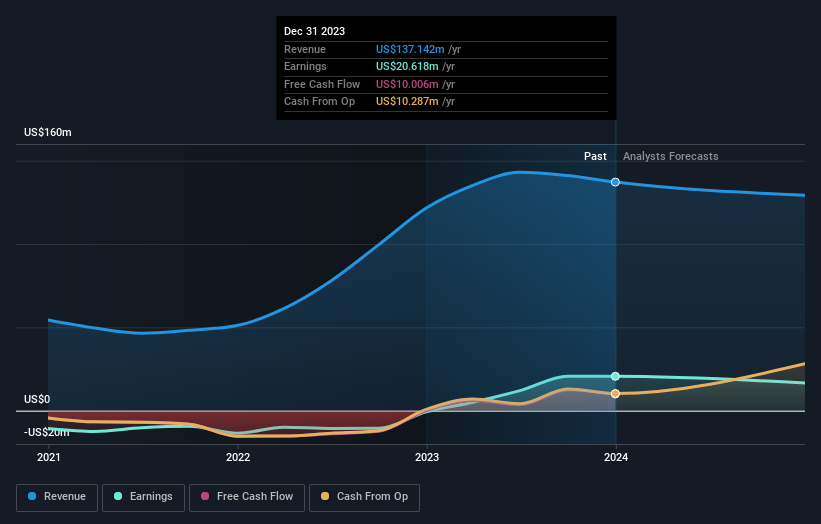Retail investors are SurgePays, Inc.'s (NASDAQ:SURG) biggest owners and were hit after market cap dropped US$25m
Key Insights
SurgePays' significant retail investors ownership suggests that the key decisions are influenced by shareholders from the larger public
The top 25 shareholders own 35% of the company
If you want to know who really controls SurgePays, Inc. (NASDAQ:SURG), then you'll have to look at the makeup of its share registry. With 58% stake, retail investors possess the maximum shares in the company. Put another way, the group faces the maximum upside potential (or downside risk).
Following a 28% decrease in the stock price last week, retail investors suffered the most losses, but insiders who own 25% stock also took a hit.
Let's delve deeper into each type of owner of SurgePays, beginning with the chart below.
Check out our latest analysis for SurgePays
What Does The Institutional Ownership Tell Us About SurgePays?
Institutions typically measure themselves against a benchmark when reporting to their own investors, so they often become more enthusiastic about a stock once it's included in a major index. We would expect most companies to have some institutions on the register, especially if they are growing.
SurgePays already has institutions on the share registry. Indeed, they own a respectable stake in the company. This can indicate that the company has a certain degree of credibility in the investment community. However, it is best to be wary of relying on the supposed validation that comes with institutional investors. They too, get it wrong sometimes. If multiple institutions change their view on a stock at the same time, you could see the share price drop fast. It's therefore worth looking at SurgePays' earnings history below. Of course, the future is what really matters.
SurgePays is not owned by hedge funds. With a 26% stake, CEO Kevin Cox is the largest shareholder. The Vanguard Group, Inc. is the second largest shareholder owning 2.7% of common stock, and David May holds about 0.9% of the company stock. Interestingly, the third-largest shareholder, David May is also a Member of the Board of Directors, again, indicating strong insider ownership amongst the company's top shareholders.
On studying our ownership data, we found that 25 of the top shareholders collectively own less than 50% of the share register, implying that no single individual has a majority interest.
While studying institutional ownership for a company can add value to your research, it is also a good practice to research analyst recommendations to get a deeper understand of a stock's expected performance. While there is some analyst coverage, the company is probably not widely covered. So it could gain more attention, down the track.
Insider Ownership Of SurgePays
While the precise definition of an insider can be subjective, almost everyone considers board members to be insiders. The company management answer to the board and the latter should represent the interests of shareholders. Notably, sometimes top-level managers are on the board themselves.
Insider ownership is positive when it signals leadership are thinking like the true owners of the company. However, high insider ownership can also give immense power to a small group within the company. This can be negative in some circumstances.
Our information suggests that insiders maintain a significant holding in SurgePays, Inc.. Insiders have a US$34m stake in this US$135m business. We would say this shows alignment with shareholders, but it is worth noting that the company is still quite small; some insiders may have founded the business. You can click here to see if those insiders have been buying or selling.
General Public Ownership
The general public, mostly comprising of individual investors, collectively holds 58% of SurgePays shares. This size of ownership gives investors from the general public some collective power. They can and probably do influence decisions on executive compensation, dividend policies and proposed business acquisitions.
Next Steps:
I find it very interesting to look at who exactly owns a company. But to truly gain insight, we need to consider other information, too. To that end, you should learn about the 3 warning signs we've spotted with SurgePays (including 1 which doesn't sit too well with us) .
Ultimately the future is most important. You can access this free report on analyst forecasts for the company.
NB: Figures in this article are calculated using data from the last twelve months, which refer to the 12-month period ending on the last date of the month the financial statement is dated. This may not be consistent with full year annual report figures.
Have feedback on this article? Concerned about the content? Get in touch with us directly. Alternatively, email editorial-team (at) simplywallst.com.
This article by Simply Wall St is general in nature. We provide commentary based on historical data and analyst forecasts only using an unbiased methodology and our articles are not intended to be financial advice. It does not constitute a recommendation to buy or sell any stock, and does not take account of your objectives, or your financial situation. We aim to bring you long-term focused analysis driven by fundamental data. Note that our analysis may not factor in the latest price-sensitive company announcements or qualitative material. Simply Wall St has no position in any stocks mentioned.


